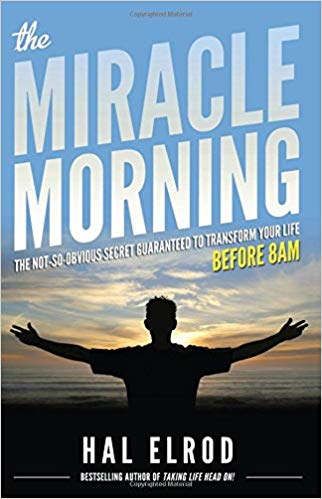Have you ever wondered why we automatically stretch when we wake up in the morning? It turns out, there are some surprising reasons behind this instinctive behavior. In this article, we will delve into the science of morning stretching and uncover its benefits for both our body and mind.
Stretching in the morning has long been a common practice in various cultures, and it’s not just about relieving that grogginess from sleep. It actually plays a crucial role in preparing our bodies for the day ahead. When we sleep, our muscles and joints become stiff, and stretching helps to increase blood flow and oxygen to these areas, promoting flexibility and reducing the risk of injury throughout the day.
But it’s not just about physical benefits. Morning stretching also has a positive impact on our mental well-being. It helps to awaken our senses, release feel-good hormones, and kickstart our metabolism. Additionally, stretching releases tension from our muscles, promoting relaxation and reducing stress levels.
So, if you’ve been neglecting your morning stretching routine, it may be time to hit the snooze button a few extra minutes and incorporate some gentle stretches into your wake-up ritual. Trust us, your body will thank you for it.

Miracle Morning
by Hal Elrod
⏱ 14 minutes reading time
🎧 Audio version available
The Importance of Stretching in the Morning
Morning stretching has been a common practice in various cultures for centuries, and for good reason. When we sleep, our muscles and joints become stiff, and stretching helps to increase blood flow and oxygen to these areas, promoting flexibility and reducing the risk of injury throughout the day. It’s like giving our bodies a gentle wake-up call, preparing them for the activities ahead.
But it’s not just about physical benefits. Morning stretching also has a positive impact on our mental well-being. It helps to awaken our senses, release feel-good hormones, and kickstart our metabolism. When we stretch in the morning, we signal to our body that it’s time to wake up and get moving, boosting our energy levels and improving our overall mood.
The Science Behind Morning Stretching
So, what exactly happens in our bodies when we stretch in the morning? When we wake up, our muscles are in a shortened state, and stretching helps to lengthen them, improving their elasticity. This increased length allows for a greater range of motion and reduces the risk of muscle strains or tears.
Stretching also stimulates the release of endorphins, those feel-good hormones that make us feel happier and more positive. It activates our parasympathetic nervous system, promoting relaxation and reducing stress levels. Additionally, morning stretching helps to increase blood flow and oxygenation to the brain, improving cognitive function and mental clarity.
Different Types of Stretches for the Morning
There are various types of stretches that can be incorporated into your morning routine, depending on your fitness level and personal preferences. Here are a few examples:
- Dynamic Stretches: These involve moving parts of your body through a full range of motion, such as arm circles or leg swings. Dynamic stretches help to warm up the muscles and increase blood flow.
- Static Stretches: These involve holding a stretch for a prolonged period, typically around 30 seconds. Static stretches help to improve flexibility and lengthen the muscles.
- Yoga or Pilates: These practices combine stretching with mindful movements and deep breathing. They promote both physical and mental well-being, making them ideal for a morning routine.
Experiment with different stretches and find what works best for you. Remember to listen to your body and never push yourself too far beyond your comfort zone.
How to Incorporate Stretching Into Your Morning Routine
Now that you understand the benefits of morning stretching and the different types of stretches available, it’s time to incorporate them into your morning routine. Here are a few tips to get you started:
- Start Slow: Begin with a few gentle stretches and gradually increase the intensity as your body becomes more accustomed to the routine.
- Set Aside Time: Dedicate at least 10-15 minutes each morning for stretching. Consider it an investment in your overall well-being.
- Create a Routine: Establish a sequence of stretches that you enjoy and can easily remember. This will help you stay consistent and make it feel like a natural part of your morning routine.
- Combine With Mindfulness: As you stretch, focus on your breath and be present in the moment. This will enhance the mind-body connection and amplify the benefits of stretching.
Remember, it’s not about perfection or achieving the most advanced poses. What matters is the intention behind your stretches and the positive impact they have on your body and mind.
Common Misconceptions About Morning Stretching
Despite the numerous benefits of morning stretching, there are some common misconceptions that may discourage people from incorporating it into their routine. Let’s debunk a few of these myths:
- You Need to Be Flexible: You don’t have to be a contortionist to stretch in the morning. Stretching is for everyone, regardless of your current level of flexibility. Start where you are and gradually work your way towards greater flexibility.
- Stretching is Only for Athletes: While athletes often incorporate stretching into their training regimen, it’s not exclusive to them. Morning stretching is beneficial for people of all ages and fitness levels.
- Stretching Takes Too Much Time: Morning stretching doesn’t have to be a lengthy process. Even just a few minutes each morning can make a significant difference in how you feel throughout the day. Plus, the time spent stretching can be a valuable opportunity for self-care and reflection.
Tips for Getting the Most Out of Your Morning Stretches
To maximize the benefits of morning stretching, here are a few tips to keep in mind:
- Stay Consistent: Make morning stretching a habit by incorporating it into your daily routine. Consistency is key to experiencing long-term benefits.
- Listen to Your Body: Pay attention to any discomfort or pain during stretching. Stretch to the point of tension, but never to the point of pain. If something doesn’t feel right, modify or skip the stretch altogether.
- Breathe Mindfully: Deep, diaphragmatic breathing can enhance the effectiveness of your stretches and promote relaxation. Inhale deeply through your nose, and exhale fully through your mouth.
- Stay Hydrated: Drink water before and after your morning stretches to keep your muscles hydrated and prevent cramping.
Stretching Equipment and Tools to Enhance Your Morning Routine
While morning stretching can be done without any equipment, certain tools can enhance your stretching routine. Here are a few options to consider:
- Yoga Mat: A non-slip yoga mat provides cushioning and stability during floor stretches.
- Foam Roller: A foam roller can be used for self-massage and to release tension in the muscles.
- Resistance Bands: These bands provide added resistance to stretches, helping to improve flexibility and strength.
- Stretching Strap: A stretching strap can assist in achieving deeper stretches and maintaining proper alignment.
Consider incorporating these tools into your routine if you feel they would benefit your stretching practice.
Related: The Step-by-Step Guide to Building A Successful Morning Routine
Morning Stretching Challenges and How to Overcome Them
While morning stretching has numerous benefits, it’s not always easy to make it a consistent practice. Here are some common challenges you may face and tips for overcoming them:
- Lack of Time: If time is a constraint, start with a shorter routine and gradually increase the duration as you become more comfortable. Remember, even a few minutes of stretching is better than none.
- Lack of Motivation: Find ways to make your morning stretching routine enjoyable. Play your favorite music, practice in a well-lit and comfortable space, or consider joining a stretching class or group for added motivation.
- Feeling Stiff or Sore: If you wake up feeling particularly stiff or sore, start with gentle stretches and gradually increase the intensity as your body warms up. Listen to your body and modify stretches as needed.
- Inconsistent Sleep Schedule: Try to establish a consistent sleep schedule to ensure you wake up feeling refreshed and ready to stretch. Create a relaxing bedtime routine and aim for 7-8 hours of quality sleep each night.
Conclusion: Start Your Day Right With Morning Stretching
Morning stretching is a powerful way to kickstart your day and set a positive tone for both your body and mind. By incorporating gentle stretches into your morning routine, you can increase flexibility, reduce the risk of injury, release tension, and promote relaxation. Remember, it’s not just about the physical benefits; morning stretching also improves mental well-being and boosts energy levels.
So, the next time you wake up, resist the temptation to jump out of bed and instead take a few minutes to stretch and awaken your body. Trust us, your body will thank you for it. Embrace the power of morning stretching and experience the transformative effects it can have on your overall well-being.
Now, go ahead and start your day right with a refreshing stretch. Your body deserves it!
What Is Snapreads?

With the Snapreads app, you get the key insights from the best nonfiction books in minutes, not hours or days. Our experts transform these books into quick, memorable, easy-to-understand insights you can read when you have the time or listen to them on the go.



